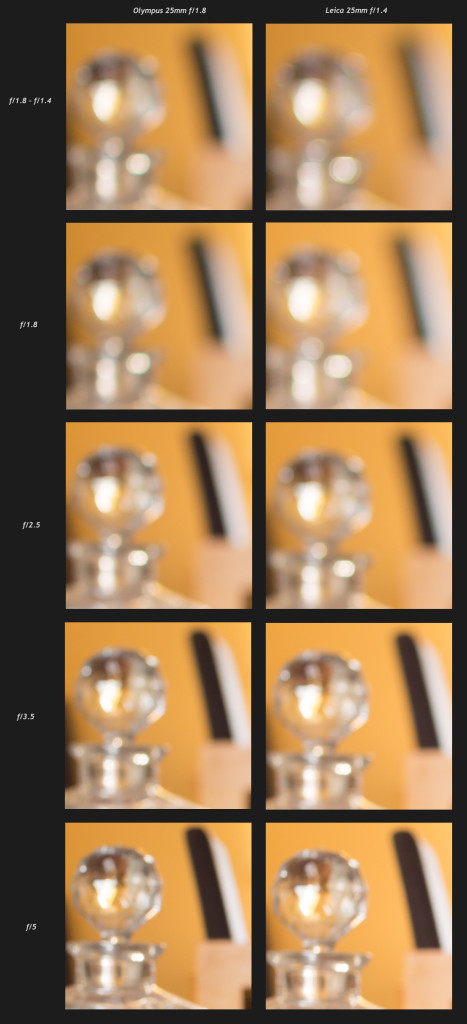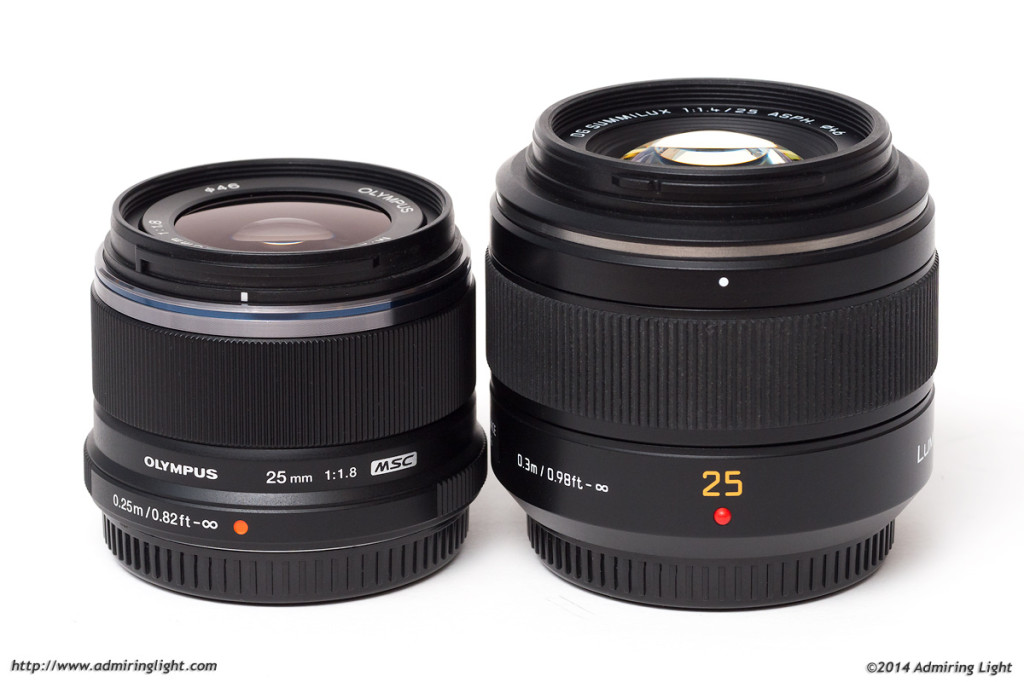Bokeh
To evaluate bokeh, I took 600×600 pixel crops that contain the top of the decanter (located about 2 feet behind the target book) and the chair in the background, which is about 10-12 feet behind the focus point.
Again, click on the image to enlarge and then click on the green arrow at the bottom of the screen to view full size:

As I mentioned earlier, there is a noticeable difference in the amount of background blur between the two lenses when wide open. While this difference will probably not make or break a shot, it is worth noting that the Panasonic will provide greater subject separation for a given shot when both lenses are wide open. If you’re after the most subject separation, this may be important. You can also see that even with both lenses at f/1.8, the Panasonic Leica 25mm f/1.4 still provides slightly more blur due to its slightly longer true focal length.
As far as the bokeh itself goes, both lenses have relatively pleasing renderings here, but neither are perfect. Both lenses show a green ring from longitudinal CA around the specular highlights, with the Olympus showing it a bit more prominently. The Panasonic also has a gentler transition of tones, leading to a slightly creamier appearance.
As the lenses are stopped down, both lenses start to correct that green fringing. The Panasonic maintains a little smoother tonal transition in the background, but as the apertures get smaller, the Olympus shows slightly rounder specular highlights.
As I see it, this is a (very slight) win for the Panasonic Leica. However, evaluation of bokeh is an extremely subjective measure, so don’t take my word for it and simply evaluate the images yourself.
Conclusion
The Panasonic Leica 25mm f/1.4 has been a mainstay of the Micro 4/3 system for some time. This excellent lens has been on the must-have list for serious photographers shooting Micro 4/3 since it came out. The new Olympus 25mm f/1.8 challenges this lens and matches up very, very well. While I find the extra 2/3 stop and slightly better bokeh of the Panasonic Leica more important for my own shooting, the Olympus 25mm is going to be the better choice if cross-frame sharpness is critical at wide apertures, or simply if size is of utmost importance. The Olympus is a significantly smaller lens that only gives up a little speed to its more expensive brother, and that makes it a great lens to have in the system.






Leave a Reply